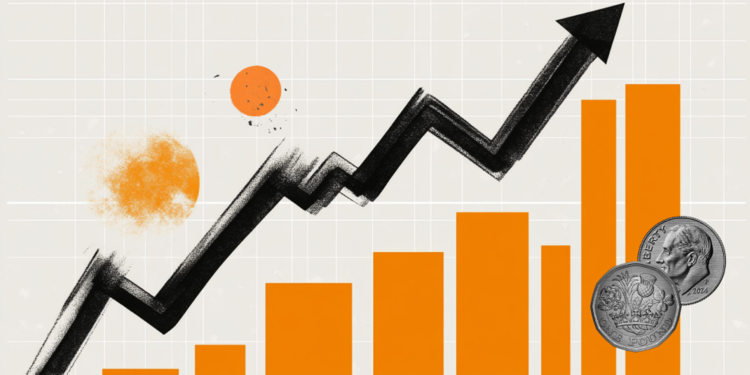Singer Céline Dion postponed the concerts that were scheduled for November in Las Vegas, USA due to health problems.
In a statement, the artist’s team informed that the withdrawal from work activities was due to “severe and persistent muscle spasms”, located in the legs and feet. However, information on the causes of the clinical condition was not disclosed.
One of Céline Dion’s relatives told Here magazine that the singer is unable to walk and that she can stay away from the stage for months for treatment.
“She can no longer get out of bed, can’t move, can’t walk. She suffers from pain in her legs and feet that paralyzes her. She is very weak and has lost a lot of weight,” the source told the magazine.
Experts consulted by CNN explain what muscle spasms are, what are the possible causes and how the treatment is done.
What are muscle spasms
Spasm is an involuntary contraction of a muscle or a set of muscles, which can happen in different situations and affect people of all ages.
Spasms are divided into two groups, tonic, which are associated with persistent and painful stiffness, and clonic, which alternate moments of muscle contraction and relaxation.
“It can be a small muscle or a set of muscles. When we’re tired and we have that eyelid muscle contraction, for example, it’s a kind of spasm. In this case, of a small muscle group, which usually happens when you are tired, stressed, sleep deprived”, explains Christiane Cobas, a neurologist at the Hospital Sírio-Libanês, in São Paulo.
What are possible causes
According to Christiane, in general, the spasms do not cause severe and persistent conditions like those of Céline Dion. The main causes are associated with emotional factors, such as stress and anxiety, excessive physical activity and dehydration, sleep deprivation, nutrient deficiencies, excess caffeine consumption and use of medications.
“When a person is very tired, stressed or when doing some strenuous muscle activity, such as a marathon, for example, it is common to have muscle spasms that can last from seconds to minutes in the limbs, which can lead to pain”, he says.
“Some electrolytes can be lowered in the blood, such as magnesium and calcium, which work a lot in muscle contraction. If there is any change in these electrolytes, it can lead to muscle contraction”, he adds.
According to experts, persistent muscle spasms can also be caused by more serious neurological diseases, in addition to tumors and spinal cord injuries.
The Sírio-Libanês neurologist explains that neurodegenerative diseases, such as Multiple Sclerosis and Amyotrophic Lateral Sclerosis (ALS), can also trigger muscle spasms. However, patients diagnosed with these disorders also have symptoms other than muscle spasms.
Spinal cord injuries resulting from trauma or illness, such as myelopathy, can cause muscle spasms with leg pain or temporary muscle paralysis. Nerve disease, which affects the lower motor neuron, also reflects in muscle contractions.
The neurosurgeon and neuroscientist at the Hospital das Clínicas in São Paulo, Fernando Gomes, presenter of Correspondent Médico, from the Novo Dia newspaper, from CNN, explains that the spasms are also related to a disease called dystonia.
Dystonia can be caused by other diseases, genetic changes and the use of medications. The disease is defined by prolonged and continuous involuntary muscle contractions, which can cause parts of the body to twist, causing pain and discomfort.
“Many times, we are not able to identify the origin of dystonia. Hereditary issues, genetics, poisoning by heavy metals, for example, could be a possible explanation for the situation”, says Fernando.
How can the diagnosis be made
The diagnosis of muscle spasms can be performed based on clinical evaluation by the neurologist, combined with results of complementary tests, such as electromyography, which allows the assessment of the state of the nerves and muscles of the arms and legs, in addition to imaging tests.
“The precise diagnosis takes into account neuroimaging exams to detect structural problems, such as a herniated disc, cancer or a malformation”, explains Fernando.
Treatment depends on the origin of the spasms
The treatment of muscle spasms must consider the source of the problem. When the condition is not associated with more serious illnesses, it can be reversed through a rehabilitation process, which involves medication and physical therapy.
“A multidisciplinary treatment approach, involving physical medicine – mainly physiotherapy, the use of medicines for muscle relaxation, medicines that will help to reduce spasm attacks. In some situations, the application of Botox and the use of electrodes to relax the functioning of the central nervous system and spasms”, says Fernando.
Physiotherapist Cadu Ramos explains that motor functions can be gradually reestablished with muscle fiber reconstruction.
“When the muscle receives the spasm, it retracts all the fiber, causing stiffness, losing strength and decreasing the nutrition and oxygenation of the muscle fiber. Physiotherapy will restore the condition of the muscle and movement through stretching and exercises”, he says.
According to the specialist, the duration of rehabilitation may vary from one person to another, depending on the worsening of muscle spasms.
Reference: CNN Brasil







